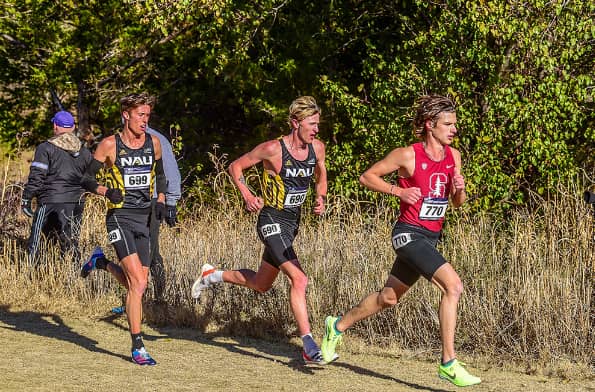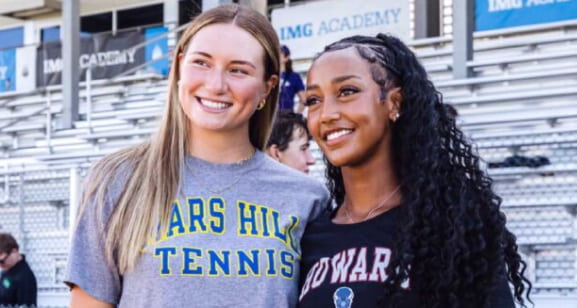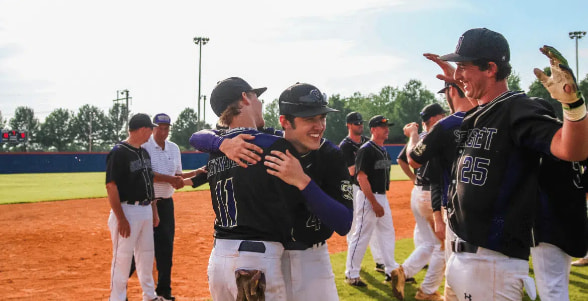Sports scholarships are financial grants given to student athletes who have a worthy athletic ability and performance. The US leads worldwide in granting these scholarships, with more opportunities than any other country.
There are three main organizations that manage college athletics. The NCAA, NAIA, and NJCAA.
The NCAA has a $4 billion in athletics scholarship amount sanctioned to Div 1 and 2 athletes, totalling more than 1,96,000 student-athletes. NAIA sanctions up to $800 million to colleges and universities, which is split between teams.
The US is the perfect destination to choose if one wants to study on a sports scholarship.
This article covers the types of sports scholarships, the recruitment process, and the application process, with more related information you need to know.
Read to understand if you are ready to study in your preferred college with your athletic ability or not.
Types of Sports Scholarships in the USA
Three primary scholarship types exist across American college athletics, each serving different athlete skill levels and financial needs.
| Scholarship Type | What It Means | Typical Athletes | Example Sports |
|---|---|---|---|
| Full-Ride Scholarship | Covers tuition, housing, meals, books, fees | Elite, top-level athletes | Football, Basketball |
| Partial Scholarship | Covers some tuition or partial expenses | Competitive but mid-level | Soccer, Track & Field |
| Walk-On Opportunities | No guaranteed funding initially; can earn scholarship later based on performance | Developing athletes | Baseball, Swimming |
While most students look toward football or basketball scholarships in the U.S., cricket is also gaining attention among young athletes seeking international opportunities. Several universities and sports programs are now recognizing the potential of Cricket scholarships for youngsters who demonstrate both academic merit and athletic talent. These programs not only help students pursue higher education but also open doors to professional cricket pathways in growing markets like the USA, UK, and Australia.
These scholarship types are distributed through three major organizations that oversee college athletics in America.
1. NCAA Scholarships
The average scholarship amount for all sports in Division I is approximately $18,319 a year for men and $19,173 for women. Starting in 2025, significant changes will reshape NCAA scholarships.
| Type | Coverage | Typical Athletes | International Eligibility |
|---|---|---|---|
| Full-Ride | Tuition, housing, meals, books | Elite athletes in high-demand sports | Yes, if recruited and eligible |
| Partial | Tuition or partial expenses | Competitive athletes, mid-level skill | Yes, limited spots |
| Walk-On | No guaranteed funding initially | Developing athletes or niche sports | Rare, usually domestic first |
Starting in 2025, schools can opt to share a “cap” of up to $20.5 million with their student-athletes, beginning July 1, 2025.
Starting in the 2025-2026 academic year, the NCAA eliminated most D1 scholarship limits, enabling all sports to distribute scholarships more flexibly among athletes.
Source: Scholarshipstats, NCAA, NCAA2
2. NAIA Scholarships
The NAIA has a significant scholarship fund of $800 million annually to help student-athletes at its institutions. These programs focus on smaller colleges with strong athletic traditions.
| Type | Coverage | Typical Athletes | International Eligibility |
|---|---|---|---|
| Full or Partial | Tuition or partial | Competitive, smaller programs | Yes, actively recruited |
| Walk-On | No guaranteed funding | Developing athletes | Possible with coach support |
Few NAIA schools will offer full-ride scholarships to athletes, but partial scholarships are more common.
Student-athletes struggling to find scholarship opportunities with an NCAA program may have a better chance of securing financial funding from an NAIA program. NAIA schools often provide more personal attention and better coach-athlete relationships due to smaller program sizes.
3. NJCAA Scholarships
Community colleges offer excellent stepping stones for student-athletes seeking four-year opportunities later. But the NJCAA scholarships are highly dependent on the division.
Div I can offer full scholarships, while Div II can only offer partial and Div III cannot offer scholarships at all.
| Type | Coverage | Typical Athletes | International Eligibility |
|---|---|---|---|
| Full | Tuition, fees, room, board, books | Highly skilled athletes | Yes, if eligible |
| Partial | Tuition, fees, books | Mid-level athletes | Yes, limited spots |
| Walk-On | No funding guaranteed | Developing athletes | Rare |
NJCAA programs serve as crucial development centers where athletes can improve their skills, grades, and recruiting profile.
Many successful NCAA Division I athletes, like Aaron Rodgers and Cam Newton, began their careers at junior colleges. These programs often have lower academic requirements initially, making them accessible to late-developing students who need time to mature academically.
Source: NJCAA, JUCO, firstpoint
Which Scholarship Should You Choose?
NCAA Division I suits elite athletes seeking maximum exposure and top-tier competition alongside rigorous academics. These programs demand the highest athletic and academic standards but offer the best professional sport pathways.

NCAA Division II provides an excellent balance between athletics and academics with partial funding opportunities.
NAIA works best for competitive athletes who want strong coach relationships and significant playing time in smaller program settings.
NJCAA serves developing athletes needing academic or athletic improvement before transferring to four-year institutions.
Eligibility Requirements For American Sports Scholarships
Every college sports organization has rules about who can play and get scholarships. Students must meet both academic and athletic standards before coaches can recruit them. These requirements protect students and ensure college sports are fair for everyone involved.

- Academic Requirements: The NCAA uses a sliding scale for eligibility, meaning your required GPA is determined by your standardized test score, though SAT and ACT tests are now optional for initial eligibility.
- Athletic Performance: Athletes are evaluated through quantifiable metrics like times, distances, and sport-specific statistics.
- Amateurism Certification: All prospective athletes must be certified as amateurs through the proper eligibility center, ensuring they haven’t received payment or benefits that would compromise their amateur status.
- International Students: International students must have their academic transcripts evaluated and provide English proficiency test scores (such as TOEFL or IELTS). Visa documentation is also required.
- Maintaining Eligibility: Once in college, student-athletes cannot “slack off.” Academic progress standards and continuous enrollment rules mean athletes must keep performing in the classroom throughout their entire college careers.
Source: NCAA, NCSA, Higher Ed Dive, U.S. Embassy
How To Apply For Sports Scholarships In The USA?
The application process requires systematic planning and consistent effort across multiple areas simultaneously.
1. Create an Athletic Profile and Highlight Videos
Build comprehensive athletic resumes including statistics, achievements, and measurable performance data. Create highlight videos showcasing best performances, typically 3-5 minutes long with clear footage and quality editing.
2. Register with the Eligibility Center
Complete NCAA Eligibility Center registration at eligibilitycenter.org for NCAA programs. NAIA requires registration through PlayNAIA.org. NJCAA uses individual college applications for eligibility determination.
3. Research and Contact Colleges
Identify target schools matching athletic ability, academic interests, and geographic preferences. Email coaches with athletic profiles, highlight videos, and academic transcripts following proper recruiting communication guidelines.
4. Submit Scholarship Applications Before Deadlines
Meet all application deadlines, typically ranging from December through March, depending on sport and college. Submit required academic documents, athletic certifications, and financial aid forms simultaneously.
5. Maintain Eligibility and Stay Consistent
Continue training, competing, and maintaining grades throughout the recruitment process. Update coaches regularly on improvements, new achievements, and continued interest in their programs.
Consistent effort throughout this process significantly raises scholarship chances, as coaches notice dedicated athletes who demonstrate commitment beyond just athletic ability.
Source: Princeton, NCSA, NCSA2, NCSA3, NSCA4
Recruitment Process For American Sports Scholarships
Getting recruited for college sports takes planning and hard work. Athletes need to put themselves in front of coaches who can offer scholarships. The process looks different for every student, but some steps work better than others.
- Build highlight videos that show your best plays from actual games, not just practice sessions
- Create athletic resumes with your stats, times, and any awards you have earned
- Send personalized emails to coaches explaining why their program interests you
- Attend camps and showcases where recruiters go to find new players
- Follow up with coaches when you improve your times or get new achievements
- Stay patient because recruiting timelines change based on your sport
Smart athletes start this process early and stay organized. Coaches want to see improvement over time, so keeping detailed records helps. The athletes who get scholarships usually work harder on recruiting than their competitors do.
Most Popular Sports For Scholarships In The USA
Some sports get more scholarship money than others because certain sports bring in television money and fill stadiums with paying fans. Athletes should know which sports offer the best chances before they pick where to focus their time.
- Football and basketball generate the majority of the revenue that funds sports scholarship programs.
- Soccer scholarships keep growing as more kids play the sport nationwide
- Track and field has many events, so athletes can find their specialty
- Swimming offers both individual races and team relay opportunities
- Tennis and baseball work well at smaller colleges with less competition
- Golf appeals to families who can pay for lessons and equipment
- Lacrosse, rowing, and field hockey add new programs every year
- Volleyball gives women especially good opportunities to compete
- Wrestling stays strong in states like Iowa, Pennsylvania, and Minnesota
Different sports peak at different times during high school. Football players might get noticed as sophomores, while distance runners often improve most during their senior year. Athletes should research which sports match their abilities and family budget.
Source: kcentv, Ussportsscholarships, torchcollegerecruiting, Scholarshipstats, Ncsasports, Ncsasportsgolf, nfhca, Scholarships, Ncsasportswrestling, nsr-inc
Sports Scholarships Opportunities In The USA For International Students
Foreign athletes get thousands of American sports scholarships every year. College coaches want good players, no matter where they come from.
Recruiting agencies work with international athletes, and know college coaches personally and understand visa paperwork better than most families do.

They charge money for their services, but many students find the investment worthwhile. You need English test scores before applying anywhere.
You need to take an English proficiency test, like the TOEFL or IELTS. While minimum scores vary by school, a TOEFL score of 61 and an IELTS score of 5.5 are often the baseline, with more selective schools requiring higher scores.
Your high school grades also need translation through approved services that convert foreign grades into American equivalents.
The process takes longer for international students than American kids. Start early and expect extra paperwork at every step.
Source: Keystonesports, NCSA, swu, ece, U.S.Embassy
How Much Do Sports Scholarships Cover?
College sports scholarships range from covering everything to paying just part of your costs.
NAIA schools give out $800 million in scholarship money each year. This money gets divided between all their teams and sports programs.
| Scholarship Type | What It Covers | Annual Value |
|---|---|---|
| Full-Ride | Tuition, room, board, books, fees | $30,000 – $80,000 |
| Partial | 25% – 75% of total costs | $7,500 – $60,000 |
| Academic Aid | Combined with athletic money | Varies by school |
Most athletes get partial scholarships rather than full rides. Your family will probably pay something toward college costs. Revenue sports like football and basketball offer better funding than smaller sports.
Every scholarship gets reviewed each year based on your grades, athletic performance, and how well you contribute to the team culture.
Source: Bold, College Sports America, Stack Athletes, IMG Academy, Long Beach University
Also Read:
- What Happens If You Fail A Class In College? [Explained]
- Why College Athletes Should Be Paid? (Reasons)
Conclusion: Sports Scholarships USA Open Global Pathways
Getting a sports scholarship in America changes everything for student-athletes. You get to play the sport you love while earning a college degree that opens doors worldwide.
The competition is tough, but thousands of spots exist for athletes who work hard and plan smart. American colleges want good athletes from everywhere.
They recruit players from small towns in Iowa and big cities in Brazil with equal enthusiasm. Your background matters less than your ability to compete and succeed in school.
The scholarship process takes time and patience. Start early, stay organized, and keep improving your athletic performance while maintaining good grades.
Athletes who get scholarships usually outwork their competitors in the recruiting game, sending more emails and attending more camps than everyone else around them.
FAQs
The NCAA, NAIA, and NJCAA provide full or partial scholarships to hundreds of thousands of student-athletes across the USA every year.
Track and field offers the most opportunities due to multiple events. Soccer, swimming, and cross country provide excellent chances. Football and basketball have the highest funding.
International students can apply across NCAA, NAIA, and NJCAA programs. Coaches actively recruit global talent. English proficiency scores and academic credential evaluation required.
Full-ride scholarships cover tuition, room, board, books, and required fees. Worth $30,000 to $80,000 annually. Athletes must maintain academic and athletic performance standards.
Athletes should begin during their sophomore year of high school. Junior year is most critical for contacting coaches and submitting applications to programs.

